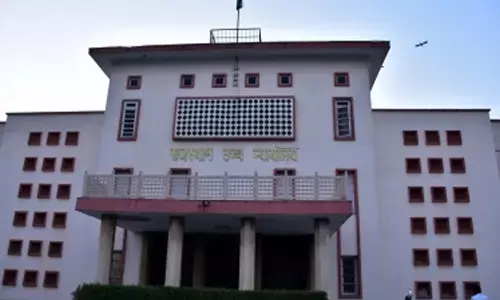IIT Mandi designs algorithms for HVAC systems in buildings
 Indian Institute of Technology Mandi
Indian Institute of Technology MandiThe Indian Institute of Technology Mandi (IIT Mandi) on Monday said its researchers have developed new algorithms for component failure detection and diagnosis that can enhance the energy-efficient operation of Heating, Ventilation and Air Conditioning (HVAC) systems used in buildings.
Mandi: The Indian Institute of Technology Mandi (IIT Mandi) on Monday said its researchers have developed new algorithms for component failure detection and diagnosis that can enhance the energy-efficient operation of Heating, Ventilation and Air Conditioning (HVAC) systems used in buildings.
In centralised HVAC systems in buildings, climate control and ventilation are performed at a centralised location outside the building by an Air Handling Unit (AHU) which results in better maintenance and no indoor noise.
The processed air is distributed to every room with the help of controlled ducts and excess air in the room is recirculated through the unit.
The effective operation of centralised HVAC systems requires the careful orchestration of the various components. A faulty component may hamper the efficient operation of HVAC and increase the costs of operation, the institute said.
Furthermore, a faulty component increases the load on the other healthy components, thereby increasing wear and tear and reducing the life of the entire system.
"Variable-air-volume (VAV) terminal boxes are an important component of centralized HVAC systems. Any faults or failures in these VAV boxes can drastically affect the control performance," said Tushar Jain, Assistant Professor, School of Computing and Electrical Engineering, IIT Mandi.
"The VAV dampers play a significant role in the supervisory health-aware control strategy of the system, and timely and automatic detection of faults in these components can be very useful in the management of the health of the HVAC", Jain explained.
According to the researchers, the algorithm developed for detection and estimation of the magnitude of the failure of VAV dampers uses analytical models that are applicable over a wide range of unpredictable operating conditions, such as weather dynamics, outside air temperature, zone occupancy profile, and so on.

















